The adjective “toroidal”, which actually means ring-shaped, seems chosen on purpose to evoke mysterious and incomprehensible geometries. Yet a toroidal helix can be made simply with a sheet of paper, scissors and a pin: many of us played with it as children, running with a stick to which it was fixed and making it spin in a whirlwind. It is called a pinwheel: the one in the figure has three blades, but they are made with four or more blades.
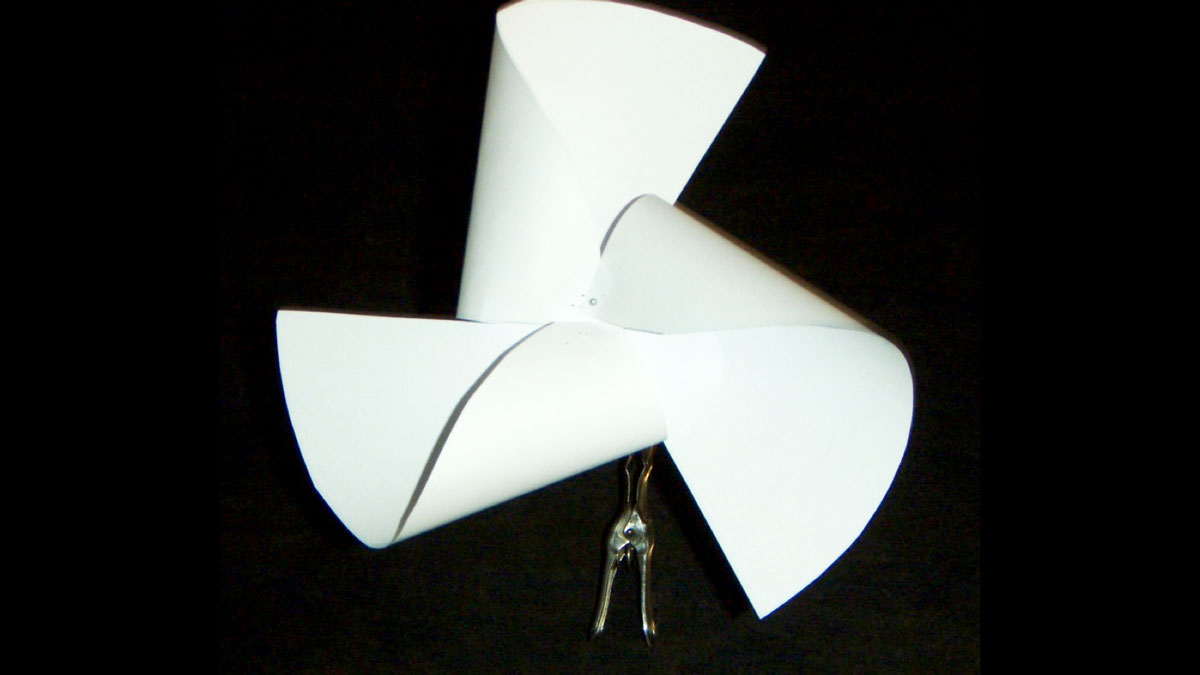
Nothing complicated, therefore, and nothing new; just as the boomerang is not new, which indeed seems to be the oldest flying object invented by man, with an origin set at around 13,000 years ago. Yes, you read right, before the pyramids and known history. The boomerang is a piece of wood in the shape of a right angle with the two sides shaped like a wing, which uses the rotation by drawing its energy to support itself and to turn, eventually returning to the starting point.

The genius and merit of the Lincoln MIT Laboratory (we are talking about the prestigious Massachusetts Institute of Technology) consist in having put these two concepts together. Let’s take the boomerang, bend it until the two ends touch and use it as a propeller blade in order to add to the thrust linked to the inclination of the blade also the lift of the boomerang’s wing profile. This is how the experimentation on two-bladed rotors mounted on drones began, like the one in the figure below.
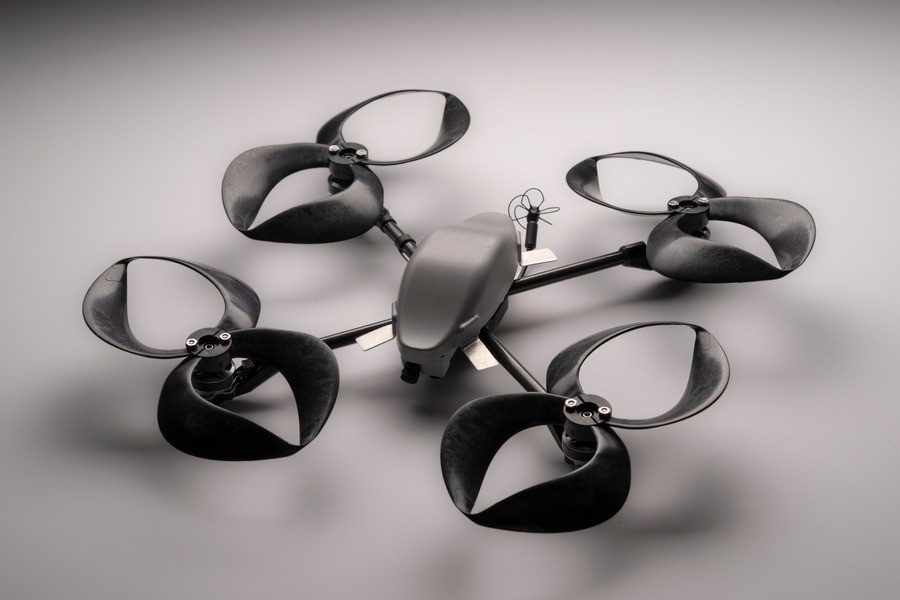
Drone with toroidal propellers, source Massachusetts Institute of Technology (MIT News)
The experimentation has given excellent results, not only from the point of view of lift and safety, but above all from the point of view of noise, greatly decreased due to the absence of vortices generated by the normal blades, as shown by the noise intensity diagrams in function of frequencies.
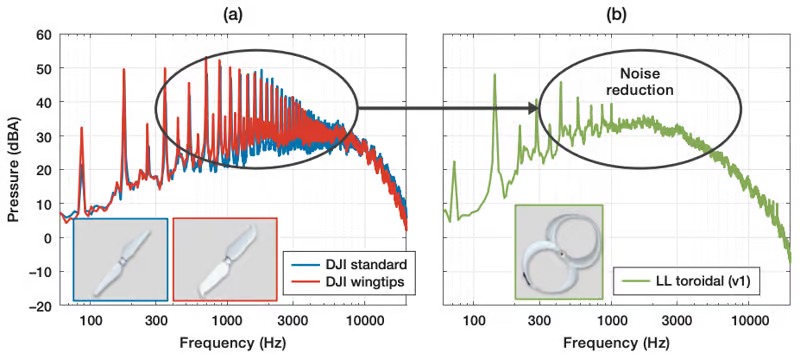
As can be seen, the noise reduction is notable precisely in the frequency fields to which human hearing is most sensitive, marked with an oval.
Because at MIT they already live in a future of cities populated by flying objects, both for the transport of people and for the transport of things: and they have rightly thought that noise reduction will then be important for the well-being and livability of the inhabitants. But then why not also think about boating and marine propellers?
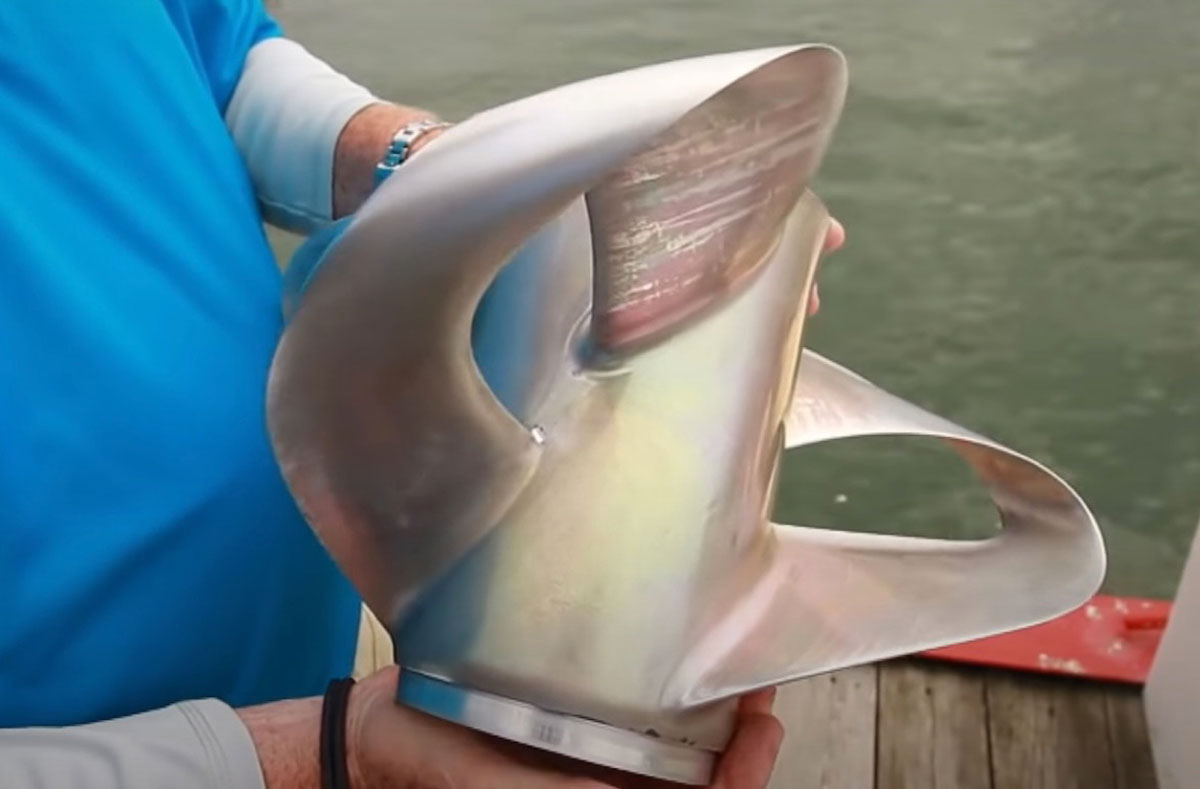
The MIT patent license was transferred to Sharrow Marine which perfected the project, in which the airfoils of the various sections of the blades can be seen, and created and put the product on sale, which it obtained in 2020 at the Miami Boat Show the innovation award.
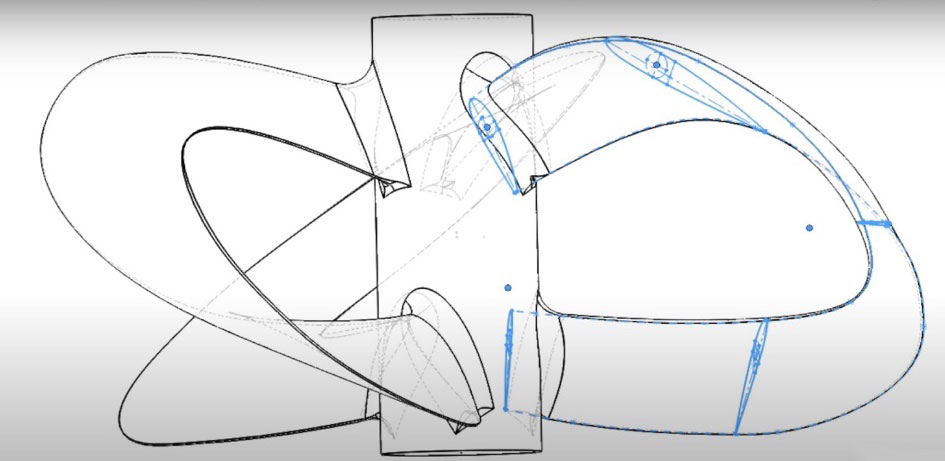
In the meantime, hundreds of comparisons and field tests have shown that the toroidal propeller not only works but proves to be superior to the classic propeller in terms of noise, fuel consumption, speed and, alas, far superior in price.
We report below two comparative diagrams obtained, like the photos, from the documentation of MIT and Shaffer Marine.
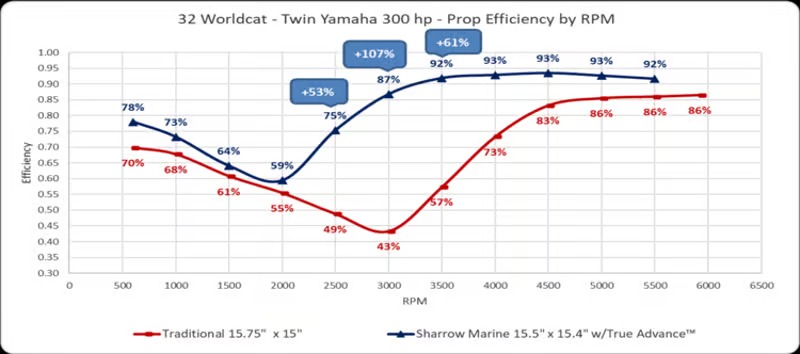
The first concerns the advancement in the water at the same number of revolutions of a hull with two 300 hp outboards: in the speed range from 2500 to 4000 revolutions the advantages of the toroidal propeller are evident. At 3000 rpm the toroidal propeller almost doubles performance and therefore halves fuel consumption.
The other graph concerns the efficiency of the propeller, which remains higher, for the toroidal, at all speeds, confirming more than double efficiency at 3,000 rpm
But then, someone will observe, why don’t we all run right away and buy a toroidal propeller for our outboard? But for the cost, of course!

Sharrow CX-1 toroidal propeller
At least at present, toroidal propellers are only available for motors from 150 to 300 hp, and their unit cost is around 5,000 dollars: more or less, that is, how much a good 20 hp motor costs!
It will therefore be necessary that, in order to properly evaluate the convenience of a purchase of this kind, you sit down at the table and consider the average conditions of use of your boat.
If you sail 100 hours a season and use the boat to reach friends and swim together in another location on the coast, well, with the toroidal propeller you won’t change your life. If, on the other hand, you transport people or things from one port to another and time plays an important role for you, well, then think about it because it could put you in much better conditions, in terms of speed, comfort and, above all, consumption: because a possible 20% savings is no small thing.






